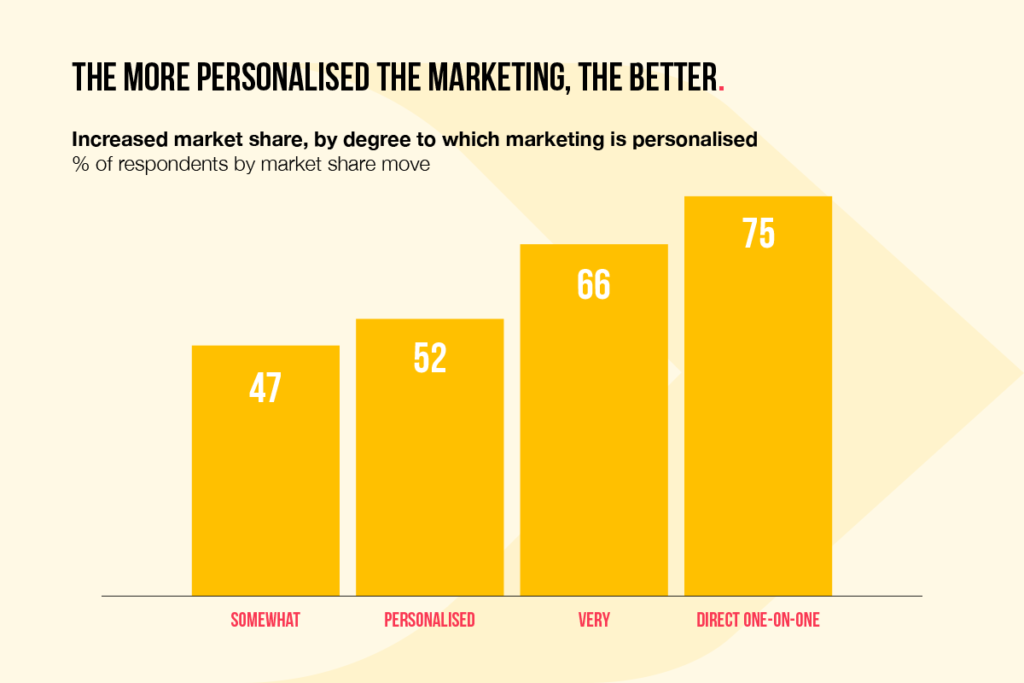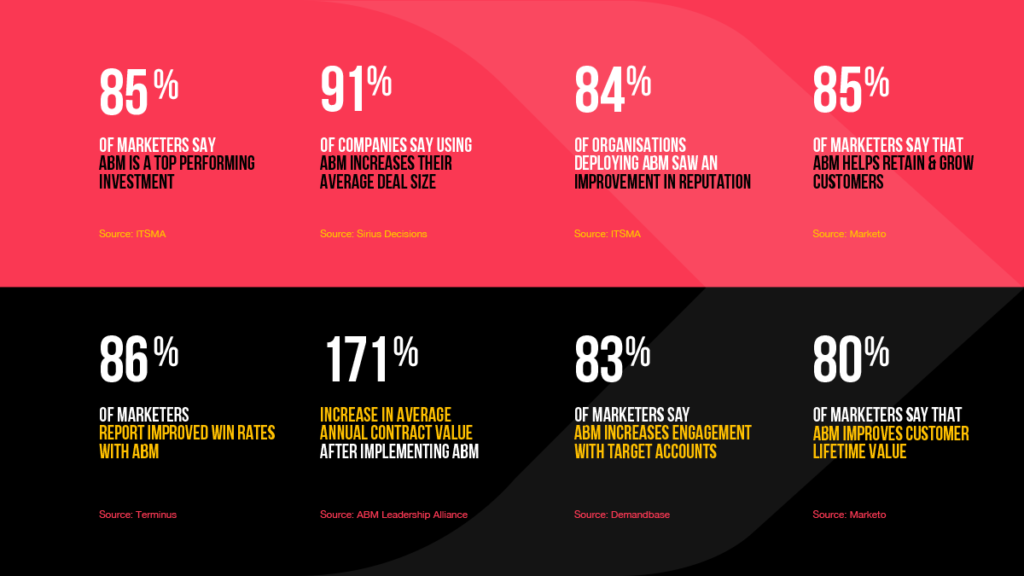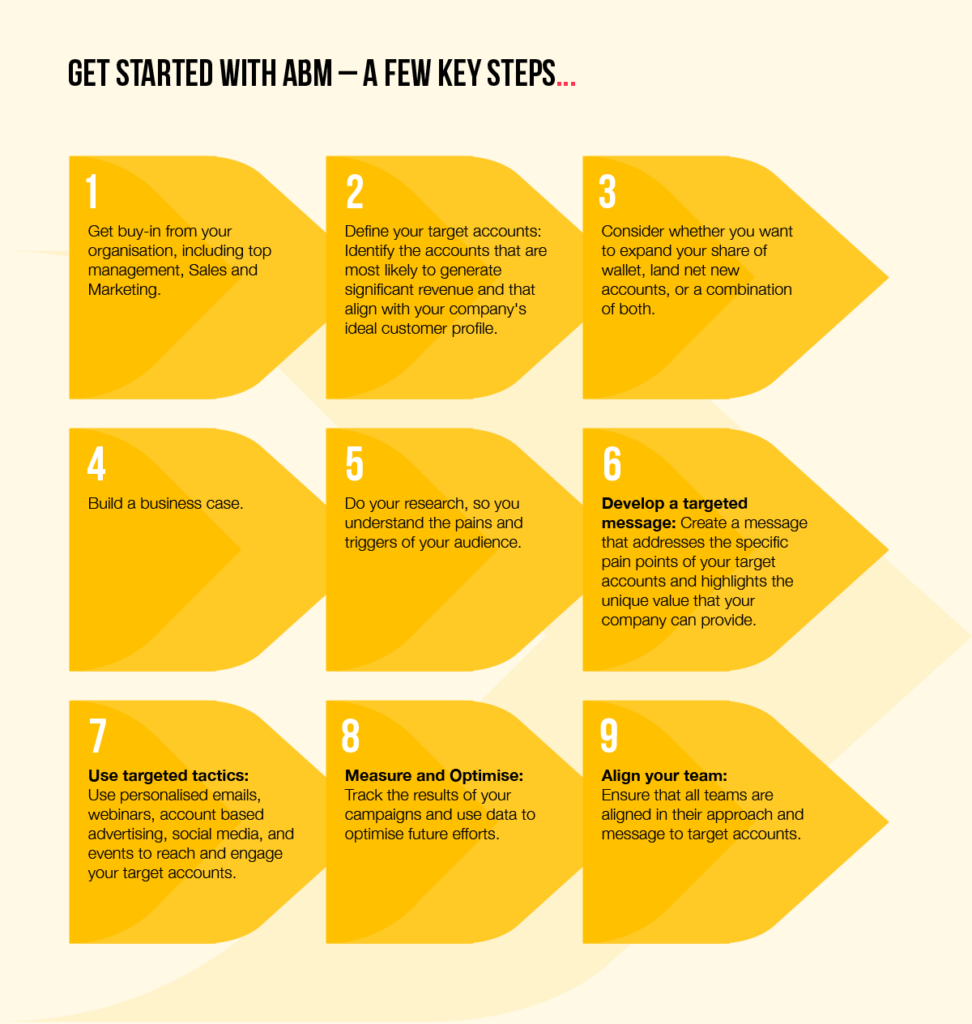What is ABM anyway?

Account-based marketing (ABM) is a strategic approach to B2B marketing that targets specific, high-value accounts rather than entire markets. One could say that ABM is about treating each key account as a market in itself. Another of my favorite definitions is this one: “Do not count the companies you reach but reach the companies that count.” In my view, this says it all.
I started working with ABM in 2017 and over the years ABM has become increasingly popular as a way for B2B companies to focus their marketing efforts on the accounts that represent the most significant revenue opportunities.
In times of great uncertainty, ABM makes even more sense. Why? Comparatively, bigger companies spend more – even in less certain times. So, if you want to grow your revenue (or even just maintain it at its current level) winning new, large deals either from existing large accounts or new large accounts is your best bet.
Tailored. Targeted. Specific.
One of the key benefits of ABM is that it allows companies to tailor their marketing efforts to the specific needs and pain points of their target accounts. This will lead to more effective campaigns and higher conversion rates. A recent study by McKinsey & Co has confirmed that companies providing personalised content stand to gain market share. Additionally, ABM allows companies to build deeper relationships with their target accounts, which can lead to increased customer loyalty and lifetime value. This is especially important since most B2B buying involves many people.

ROI optimized, thanks to decisions driven by data
Another benefit of ABM is that it can help companies to better measure and optimize the ROI of their marketing efforts. Because ABM is focused on specific accounts, it is easier to track the results of campaigns and make data-driven decisions about future marketing efforts. If you are executing a ‘One-to-Many’ ABM project, you may want to consider intent-based advertising (IBA). IBA allows you to target companies that consume content that is relevant to your value proposition. By measuring their engagement and picking up intent details you may subsequently want to move the best engaging accounts to a One-to-Few ABM program. In this way, your company has an “always-on” digital presence – a strategy that is highly recommended.
There are many proof points that ABM done correctly has a very positive commercial impact. Here are a few stats you may impress your CFO:

But how do you get started, you may ask? Here is one suggestion:

Is ABM right for you?
ABM is not for everybody. This is because the discipline requires a significant investment of time and resources. ABM is particularly relevant if you have a long and complex customer journey, decision-makers are numerous, and the deal size is substantial. A fierce competitive environment is another parameter to look out for. If you can tick these boxes, the benefits can be significant. Companies that implement ABM can see increased conversions, higher customer lifetime value, and better ROI. My experience is that with careful planning and execution, and an agile approach, close alignment between Sales and Marketing it is almost guaranteed that companies will see significant growth both in pipeline and revenue. And what’s not to like about that?
